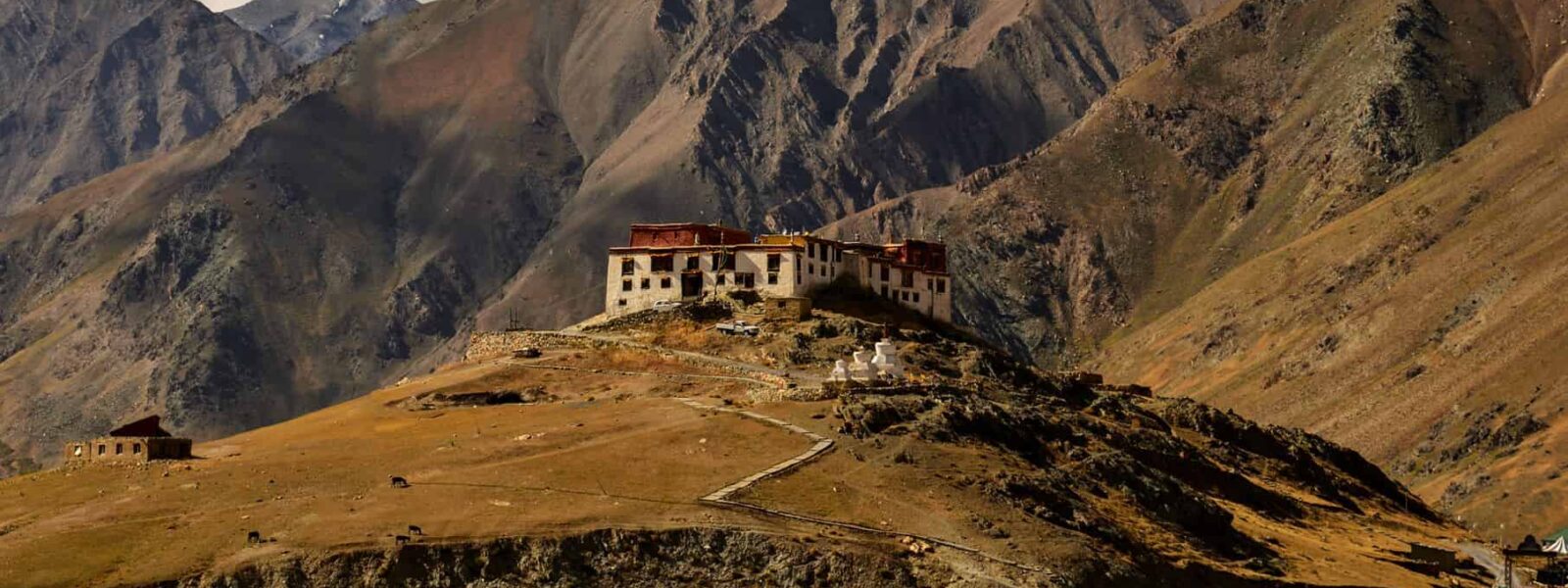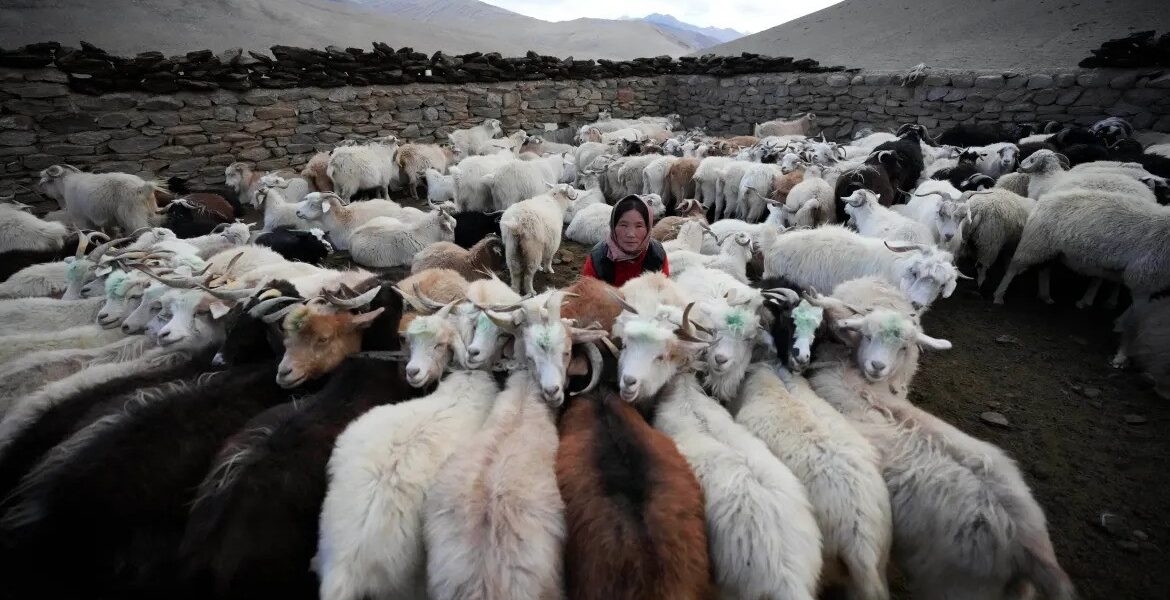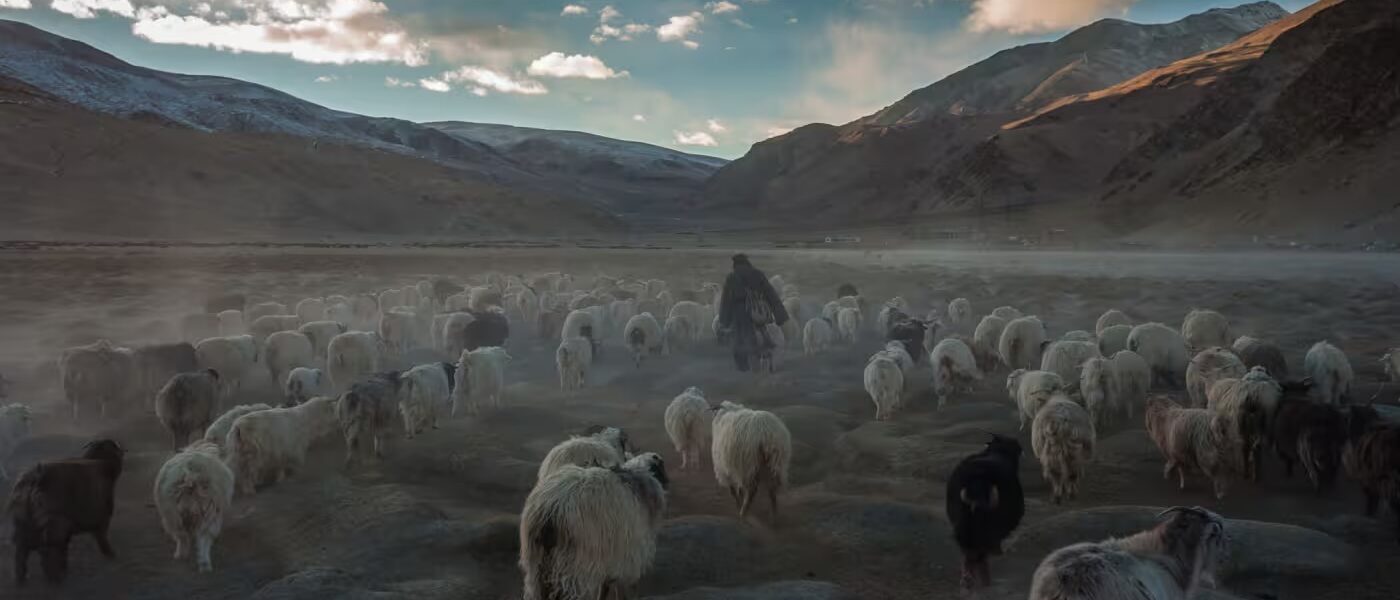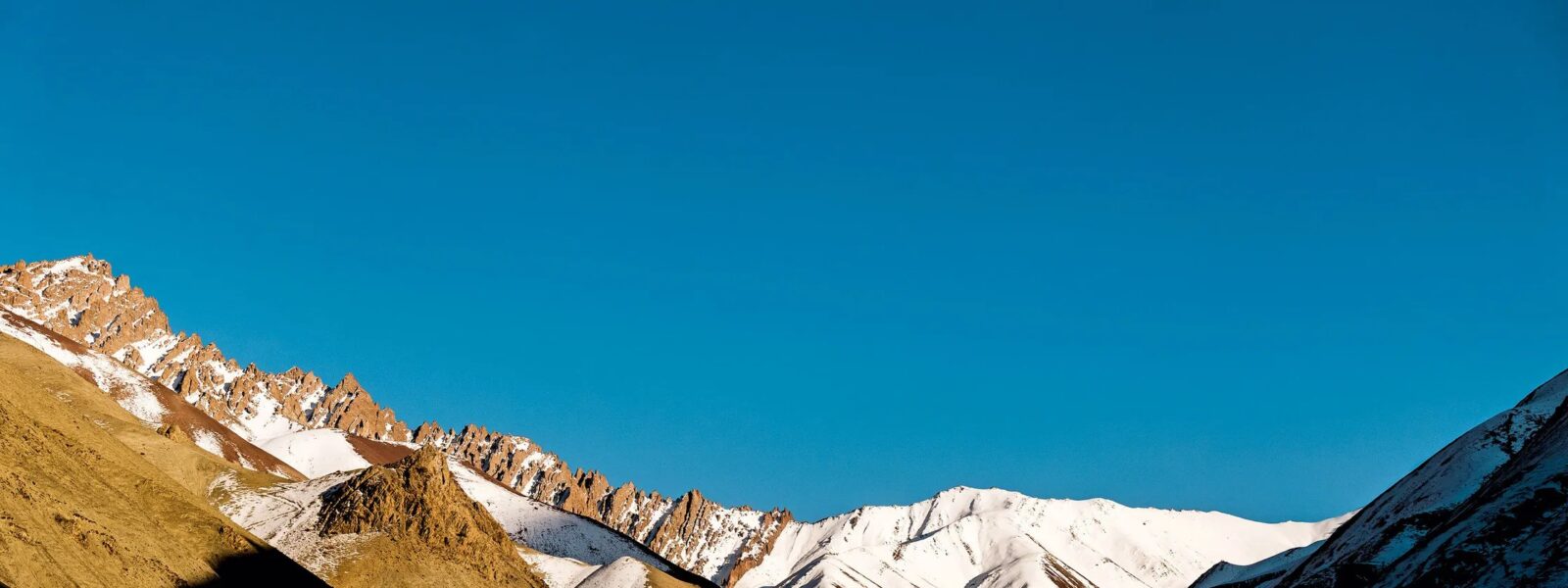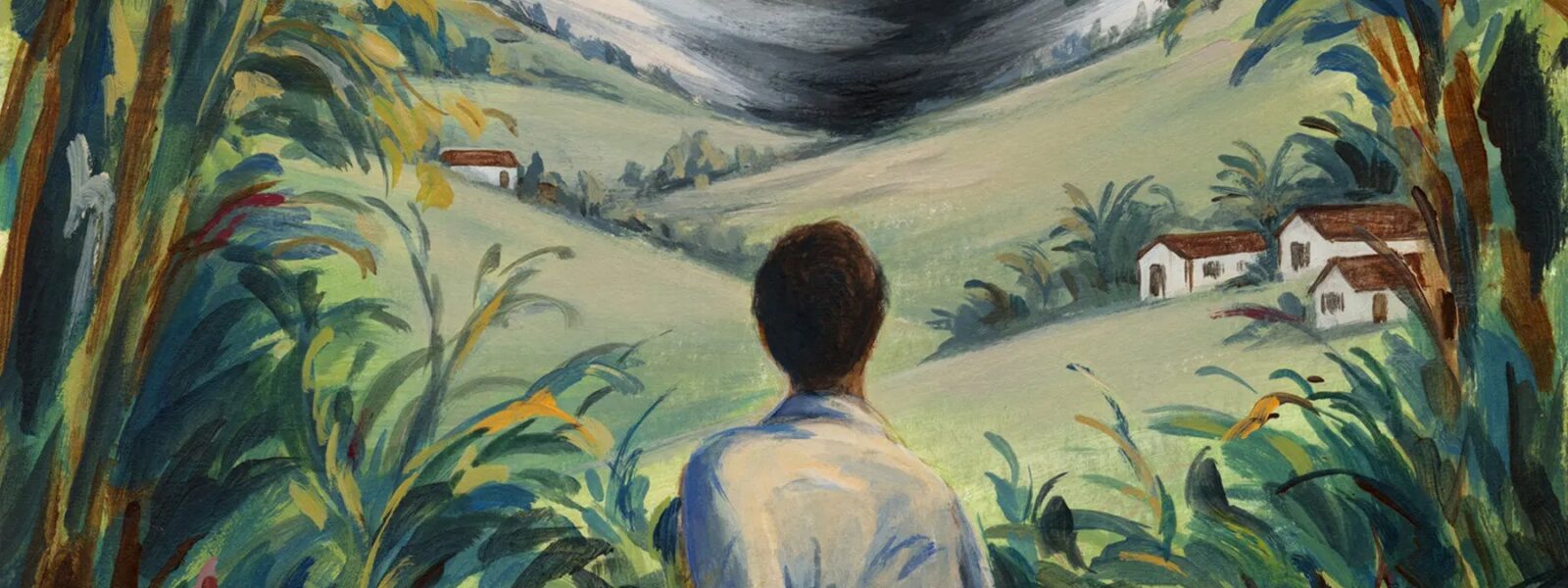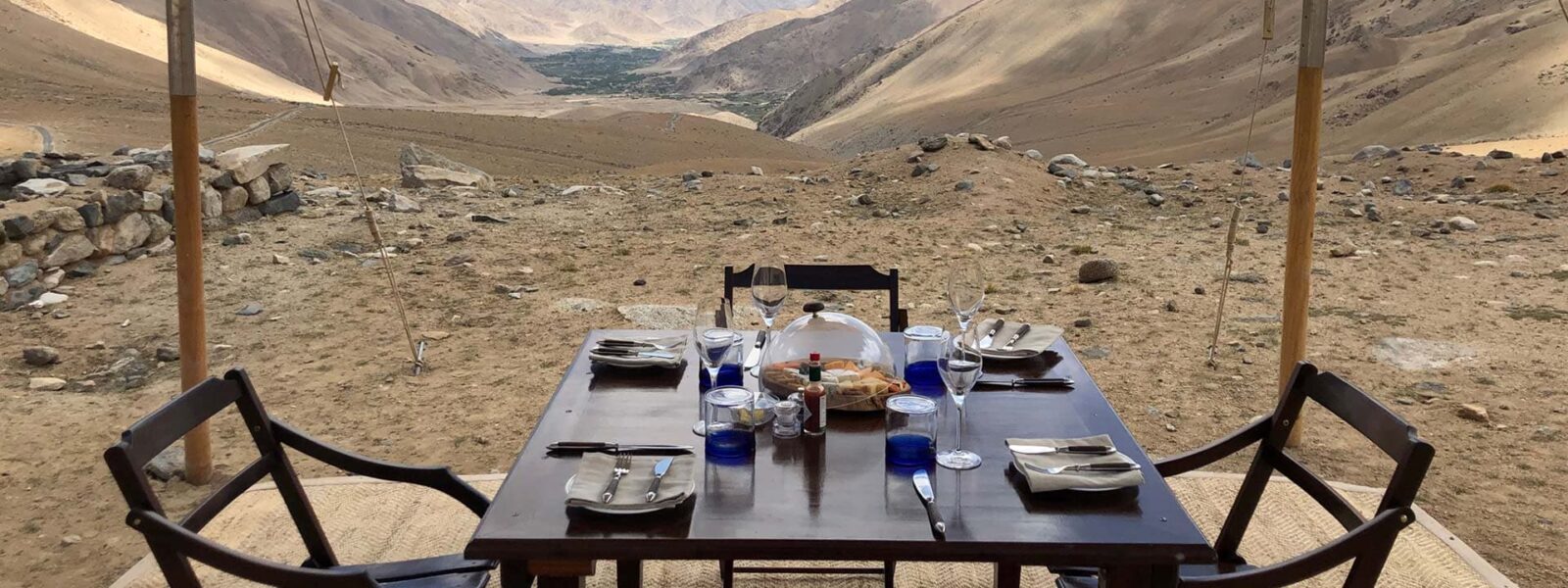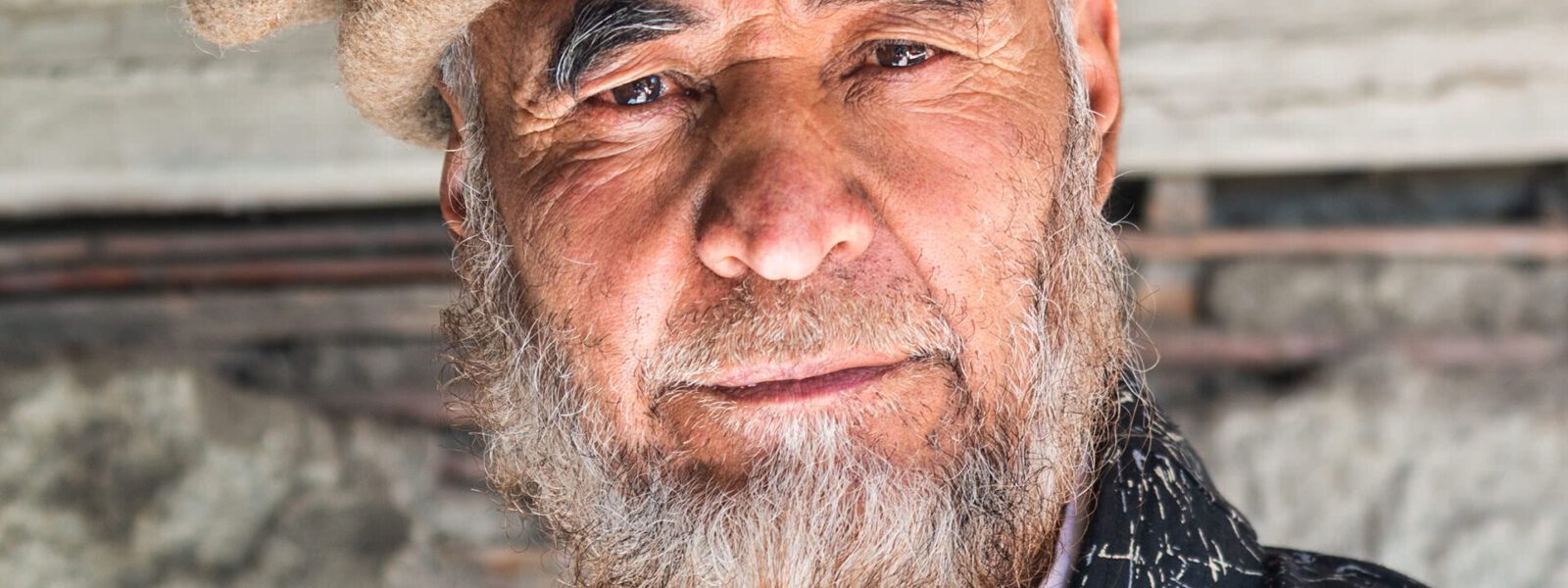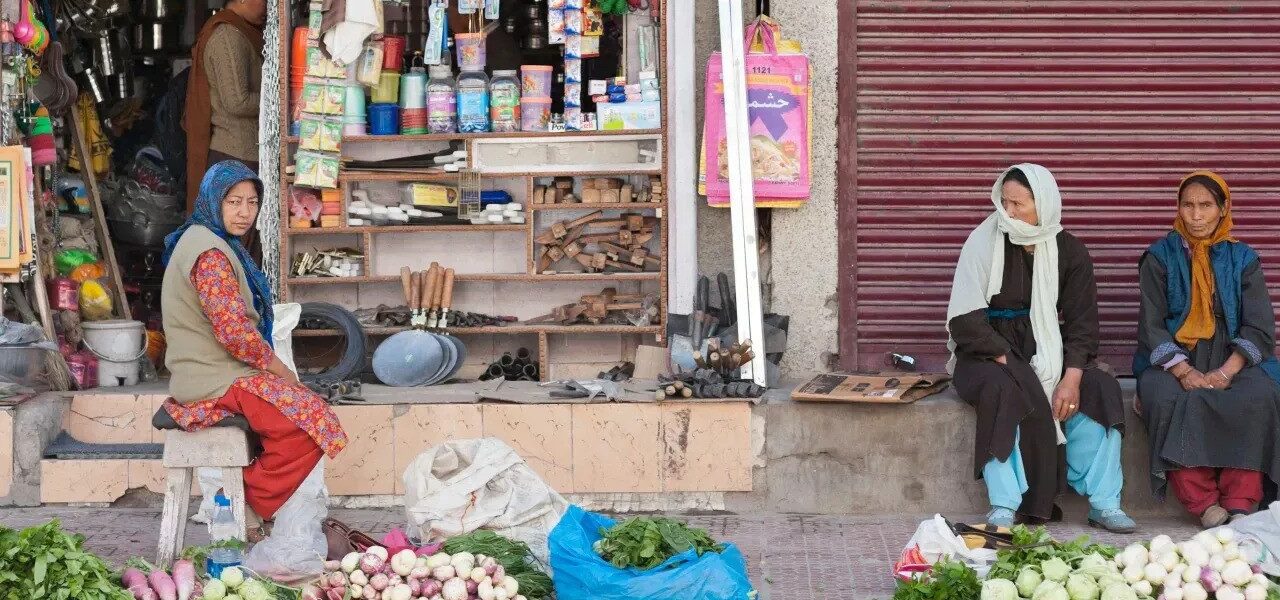🗺️ Introduction to Rangdum Monastery
Nestled between the stark beauty of the Suru Valley and the mystical remoteness of Zanskar, Rangdum Monastery is more than just a religious site — it’s a cultural sentinel that connects two worlds. Set at an altitude of around 4,031 meters (13,225 feet), this high-altitude monastery stands on a small hillock, almost like an island in the middle of a vast alpine desert. It’s one of the most isolated yet spiritually powerful Buddhist monasteries in the Indian Himalayas.Though geographically located in the Suru Valley, Rangdum is culturally and spiritually aligned with Zanskar. This duality is what makes it so compelling. For travelers venturing into this remote corner of Ladakh, Rangdum offers more than a stopover. It is an invitation to witness the delicate balance between Muslim-majority Suru and Buddhist Zanskar—a living example of harmony in high-altitude desolation.
Founded in the 18th century, Rangdum belongs to the Gelugpa sect of Tibetan Buddhism, also known as the “Yellow Hat” school. Monks dressed in deep maroon robes with golden yellow shawls can be seen performing their rituals, maintaining ancient traditions that echo through its mud-plastered walls. Its connection to the broader Tibetan Buddhist world lends the gompa (monastery) a quiet but intense spiritual energy that deeply resonates with those who make the journey.
The landscape surrounding Rangdum is both serene and dramatic. Snow-covered peaks tower in the distance, while glacial streams trace silvery lines across the arid plains. The Drang Drung Glacier, one of the largest in Ladakh, lies just beyond, feeding the Suru River. In spring and summer, wildflowers briefly bloom, softening the harshness of the terrain and adding splashes of color to the predominantly brown and white backdrop.
For those yearning to go off the beaten path, Rangdum offers a slice of Ladakh that is unfiltered, raw, and deeply spiritual. Unlike the popular monasteries of Leh or Hemis, this place receives few tourists, which allows you to experience it in an almost meditative silence. It’s the kind of place where you hear your thoughts clearly, interrupted only by the flutter of prayer flags or the distant call of a Himalayan raven.
As you stand before Rangdum Monastery, surrounded by nothing but the vastness of space and the whisper of the wind, you begin to understand why this place is revered—not only as a place of worship but as a symbol of endurance, faith, and cultural unity.
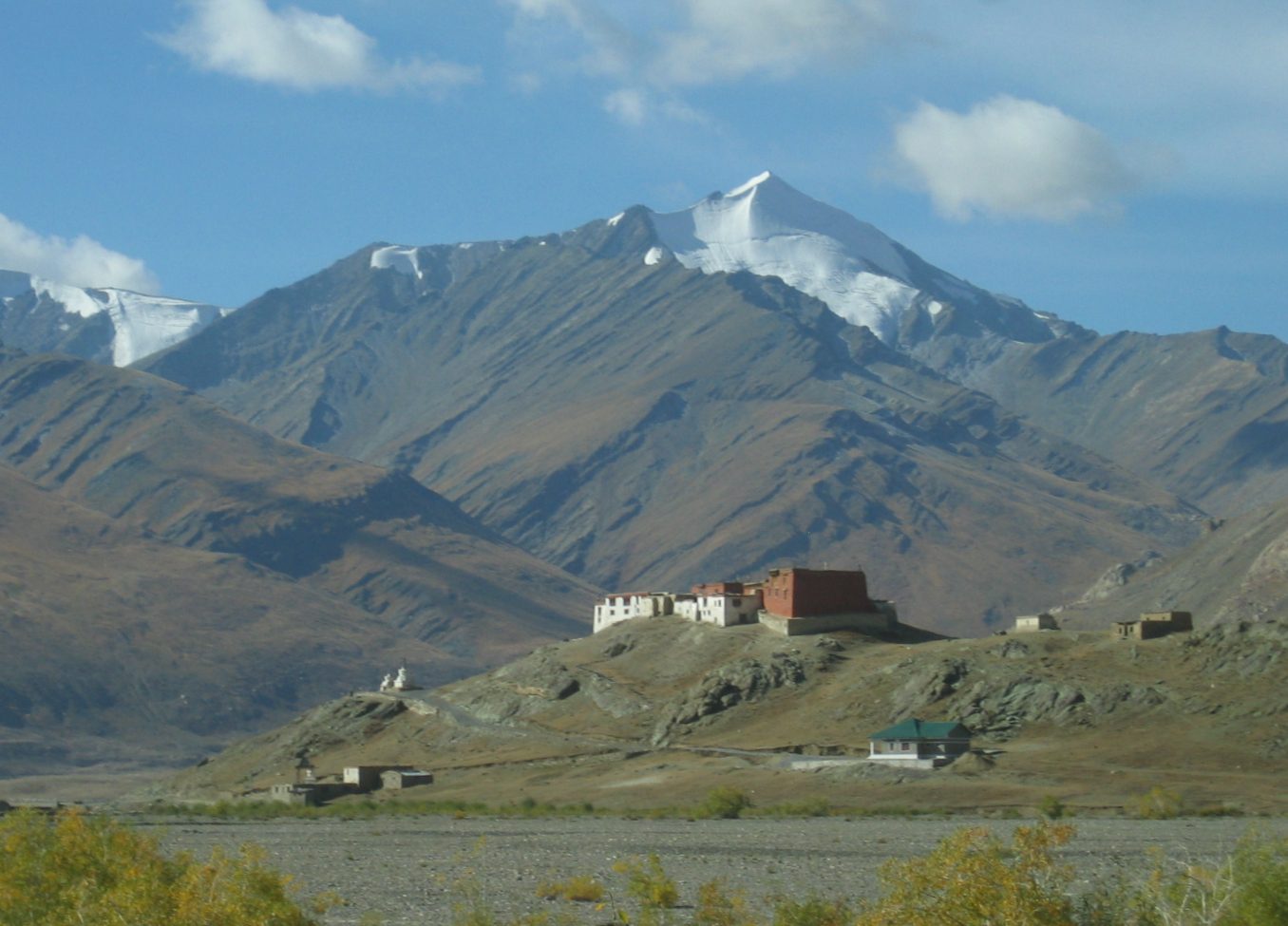
🛣️ Getting to Rangdum Monastery: The Journey Is the Destination
Reaching Rangdum Monastery is a journey of its own—an expedition through high-altitude wilderness that unfolds like a meditation in motion. Whether you’re coming from the bustling town of Kargil or heading toward the rugged isolation of Padum in Zanskar, Rangdum sits as a solitary sentinel on the edge of civilization and timelessness.Most travelers begin their journey from Kargil, the second-largest town in Ladakh, located about 130 kilometers from Rangdum. The road winds upward through the Suru Valley, following the Suru River past ancient villages, glacier-fed streams, and the occasional stone mosque standing silently against the mountains. Along the way, you’ll pass picturesque hamlets like Panikhar and Parkachik, where life still follows the rhythm of the land and the seasons.
As you drive higher, the scenery shifts dramatically. Verdant fields and apricot orchards give way to a lunar landscape of barren slopes, grey moraines, and shimmering ice. At Parkachik, you’ll catch your first breathtaking view of the Nun-Kun peaks, the highest mountains in the Zanskar range, standing as gatekeepers to Rangdum’s sacred plateau. This part of the route is where most travelers stop, if only to stare in awe and let the silence speak.
The road from Kargil to Rangdum is rough, especially after Parkachik, with long stretches of gravel and stream crossings that change character with the seasons. But that’s precisely what makes it rewarding. The difficulty of access ensures that only the truly curious or spiritually inclined make it to Rangdum. Every kilometer feels earned, and every curve brings with it a deeper immersion into Ladakh’s raw and untouched heartland.
The final stretch to the monastery, just past the Rangdum village, presents a breathtaking view: a hilltop gompa surrounded by wide open plains, glacial rivers, and a dramatic mountain amphitheater. The contrast is striking—between the silence of nature and the quiet chants that echo from within the monastery walls.
For the more adventurous traveler, it is also possible to approach Rangdum from Padum, the gateway to the Zanskar Valley, located approximately 60 kilometers away. While this route is even more rugged, it offers a spectacular reverse journey, descending from the spiritually rich Zanskar heartland into the Suru frontier.
It’s important to note that the best time to make this journey is between June and September, when the snow has melted, the streams are manageable, and the road is open. During winter, Rangdum is cut off entirely, isolated beneath snow and silence, accessible only to the most hardened trekkers or by helicopter in emergency situations.
For those who undertake it, the road to Rangdum is not just a route—it’s a spiritual corridor, a transformative path where every bend is a prayer and every pause is a lesson in humility. It’s not just about getting to the monastery. It’s about discovering why you came.

🧘 Spiritual and Cultural Significance
At first glance, Rangdum Monastery appears as a solitary speck in a vast wilderness—but step inside its walls, and you are entering a space where centuries of devotion, prayer, and cultural resilience echo quietly across time. This is not merely a building of stone and earth. It is a living sanctuary of Tibetan Buddhist tradition, beating in rhythm with the cycles of the high Himalayas.The monastery belongs to the Gelugpa sect of Tibetan Buddhism, also known as the “Yellow Hat” order, the same lineage followed by the Dalai Lama. Within Rangdum’s thick mud walls and prayer rooms painted with soot and butter-lamp smoke, monks carry out rituals that have remained unchanged for generations. Their chants begin before sunrise, resonating with low, meditative tones that seem to blend seamlessly into the thin mountain air.
Though it lies geographically in the Suru Valley, which is largely inhabited by Shia Muslim communities, Rangdum is spiritually connected to Zanskar, one of the most remote and devoutly Buddhist regions in India. This positioning makes the monastery a rare and remarkable example of cultural coexistence. Here, Islam and Buddhism do not clash but coexist quietly, each respecting the silence and sanctity of the land.
Rangdum serves not only as a place of worship but also as a spiritual training ground for young monks. The monastery hosts around 30 to 40 resident monks, many of them children from nearby Zanskar villages who begin their education in Buddhist philosophy, ritual, and meditation here. Life is simple and disciplined—rising before dawn, cleaning the monastery, memorizing scriptures, and studying the teachings of the Buddha. These routines may seem austere, but to those within, they offer stability, purpose, and peace.
One of the most profound aspects of visiting Rangdum is its atmosphere of pure devotion without performance. Unlike the more tourist-heavy monasteries in central Ladakh, Rangdum has no curated cultural shows or rehearsed ceremonies for visitors. What you see and hear—be it the blowing of conch shells, the rhythmic beating of ritual drums, or the slow lighting of butter lamps—is all genuine and spontaneous, part of the everyday life of the monastery.
During certain parts of the year, Rangdum hosts small-scale festivals and prayer gatherings, often timed with the Tibetan lunar calendar. These are not grand public spectacles but rather intimate spiritual events, attended mostly by locals from surrounding hamlets. If you’re lucky enough to witness one, you’ll find yourself amid masked dances (Cham), fire offerings, and rituals that invoke protection and blessings for the region’s people and wildlife.
But perhaps Rangdum’s greatest spiritual significance lies in its silence. This is the kind of silence that holds space—not emptiness, but presence. Surrounded by towering mountains and endless sky, Rangdum allows visitors to sit, listen, and simply be. It’s here, in the stillness of the wind and the prayer wheel’s gentle spin, that many find something quietly transformative.
In a world constantly clamoring for attention, Rangdum whispers. And those who truly listen may discover that it speaks to the very soul.

🏞️ The Scenic Beauty Around Rangdum Monastery
Few places in the world offer such a dramatic fusion of silence, sky, and stone as the landscape surrounding Rangdum Monastery. Here, every glance out the window or turn of the trail presents a painting—wild, vast, and unedited by human interference. For the traveler willing to make the journey, this remote pocket of Ladakh rewards with something rare: authentic Himalayan solitude, sculpted by time and glacier.To the north lies the Suru Valley, carved by the ice-fed Suru River and crowned by the towering peaks of Nun and Kun—two of the highest mountains in the Indian Himalayas. Their snow-covered ridgelines rise like a sacred wall, casting morning shadows over villages and alpine meadows. When the sun hits their flanks at sunrise, the peaks blush with a glow that feels almost divine.
As you move closer to Rangdum, the landscape changes. Trees disappear. Fields turn to tundra. Earth and sky meet in a wide, open plain that feels lifted from the world below. It’s in this elevated emptiness that Rangdum Monastery stands sentinel, surrounded by meandering rivers, glacial moraines, and scattered clusters of yak and sheep.
Just beyond Rangdum lies one of Ladakh’s most extraordinary natural wonders: the Drang Drung Glacier. Visible from the Pensi La pass, this serpentine river of ice snakes down from the Zanskar mountains, its jagged surface glowing pale blue under the sun. It’s one of the largest glaciers in Ladakh, and for many, a highlight of the journey to or from Padum. Though rugged and wild, the area around the glacier is accessible by road during summer months and makes for a jaw-dropping photo stop.
The beauty here is not merely visual—it’s atmospheric. There’s a certain quality to the light, a certain tone to the wind, that seems to amplify the sense of space and stillness. Photographers, poets, trekkers, and seekers alike find themselves moved, not only by what they see, but by how they feel. It’s a place where the air is thin, but the experience is thick with meaning.
During late spring and early summer, the otherwise barren land around Rangdum comes alive with tiny wildflowers—purples, yellows, and whites bursting from rocky soil in defiance of the cold. These short-lived blooms are a quiet miracle in an otherwise stark world, reminding us that even in the most austere conditions, beauty finds a way.
For those with time and curiosity, short hikes around the monastery offer intimate encounters with the landscape. You might pass a shepherd leading his flock across a stream, or a crumbling mani wall etched with prayers. You might hear the low call of a Himalayan snowcock or see a lammergeier—Ladakh’s majestic bearded vulture—riding thermals high above.
This is a land that does not shout for your attention. It invites you to slow down, to look longer, to breathe deeper. And in doing so, it offers something more lasting than a perfect photograph—it gives you a sense of place, of presence, and of perspective.
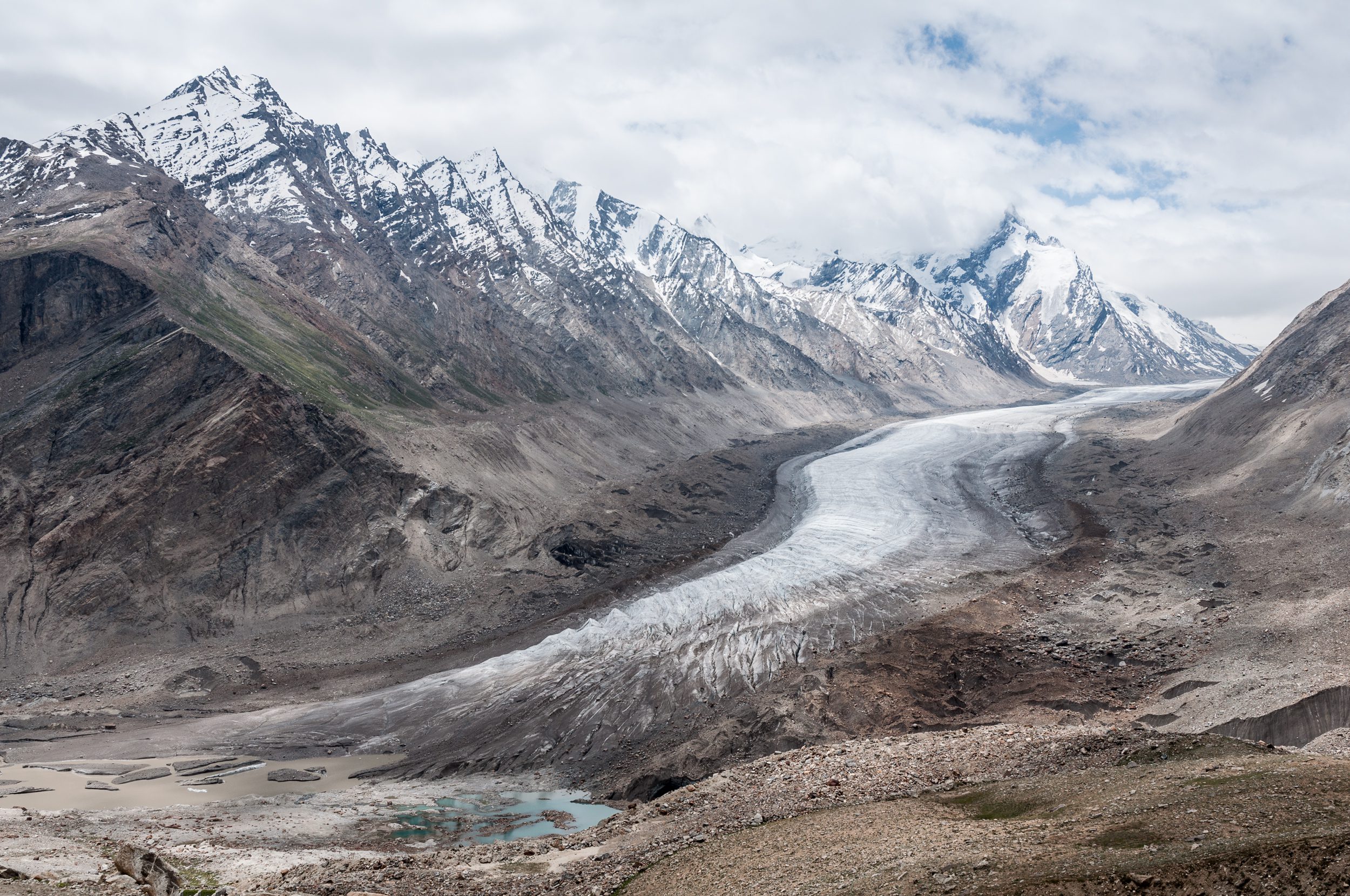
🛏️ Practical Travel Tips for Visitors
Traveling to Rangdum Monastery is not your average holiday escape—it’s an expedition into Ladakh’s remote spiritual frontier. With its high-altitude location, limited amenities, and raw environment, Rangdum demands respect and preparation. But for those who arrive informed, it delivers an experience that lingers long after the journey ends.Let’s begin with the basics: accommodation. There are no luxury hotels or boutique resorts in Rangdum. The nearest options are humble and grounded in the local rhythm of life. Most travelers choose to stay in Rangdum village, just below the monastery, where a few family-run guesthouses and homestays offer simple rooms, traditional meals, and warm hospitality. Expect basic facilities—shared toilets, no Wi-Fi, limited electricity—but rich conversations and star-filled skies more than make up for the rustic setup.
A night or two here is highly recommended, not just to explore the monastery but to acclimatize and truly feel the land. Sharing butter tea with your host or waking up to the slow clang of monastery bells adds emotional texture to the physical landscape. For the more adventurous, camping near Rangdum is possible in the short summer season. You’ll need your own gear, and it’s best arranged with a local trekking agency in Kargil or Padum.
When it comes to food, expect Ladakhi staples—tsampa (roasted barley flour), thukpa (noodle soup), and momos (dumplings)—prepared with local ingredients and traditional techniques. Pack high-energy snacks, water purifiers, and anything else you consider essential, as shops are limited and sparsely stocked.
Visitors should also plan for the altitude. At over 4,000 meters, Rangdum can trigger symptoms of AMS (Acute Mountain Sickness). Rest on arrival, drink plenty of fluids, and avoid alcohol. If you’ve just driven up from lower altitudes like Kargil, take it easy on day one. If you’re trekking or cycling, build in buffer days to adjust your pace and allow your body to adapt.
Transportation requires foresight. Public buses between Kargil and Padum are rare and seasonal. Hiring a private vehicle from Kargil is the most flexible option, allowing for photo stops and detours to nearby attractions like Parkachik Glacier or the Nun-Kun base camp trailhead. Check in Kargil town for shared taxis or organized jeep tours, especially during summer.
For foreign tourists, no special permit is currently required to visit Rangdum, as it lies outside the Inner Line Permit (ILP) zones. However, always carry your passport and a few photocopies, especially if you plan to venture further into Zanskar or Nubra.
There’s no mobile network in Rangdum. Embrace the digital silence—it’s part of the charm. Let your loved ones know you’ll be off-grid, and prepare to reconnect with the present moment instead of notifications. Bring power banks or solar chargers if needed.
Last but not least: pack wisely. Weather in Rangdum can change quickly. Even in summer, temperatures drop near freezing at night. Layered clothing, sturdy shoes, sunblock, sunglasses, and a good windproof jacket are essential. Don’t forget lip balm and moisturizer—the dry wind is relentless.
Rangdum is not a place you visit by accident. It requires intention and care. But that’s exactly why it stays with you—because everything you do to get there becomes part of the journey, and everything you experience while you’re there becomes part of who you are.
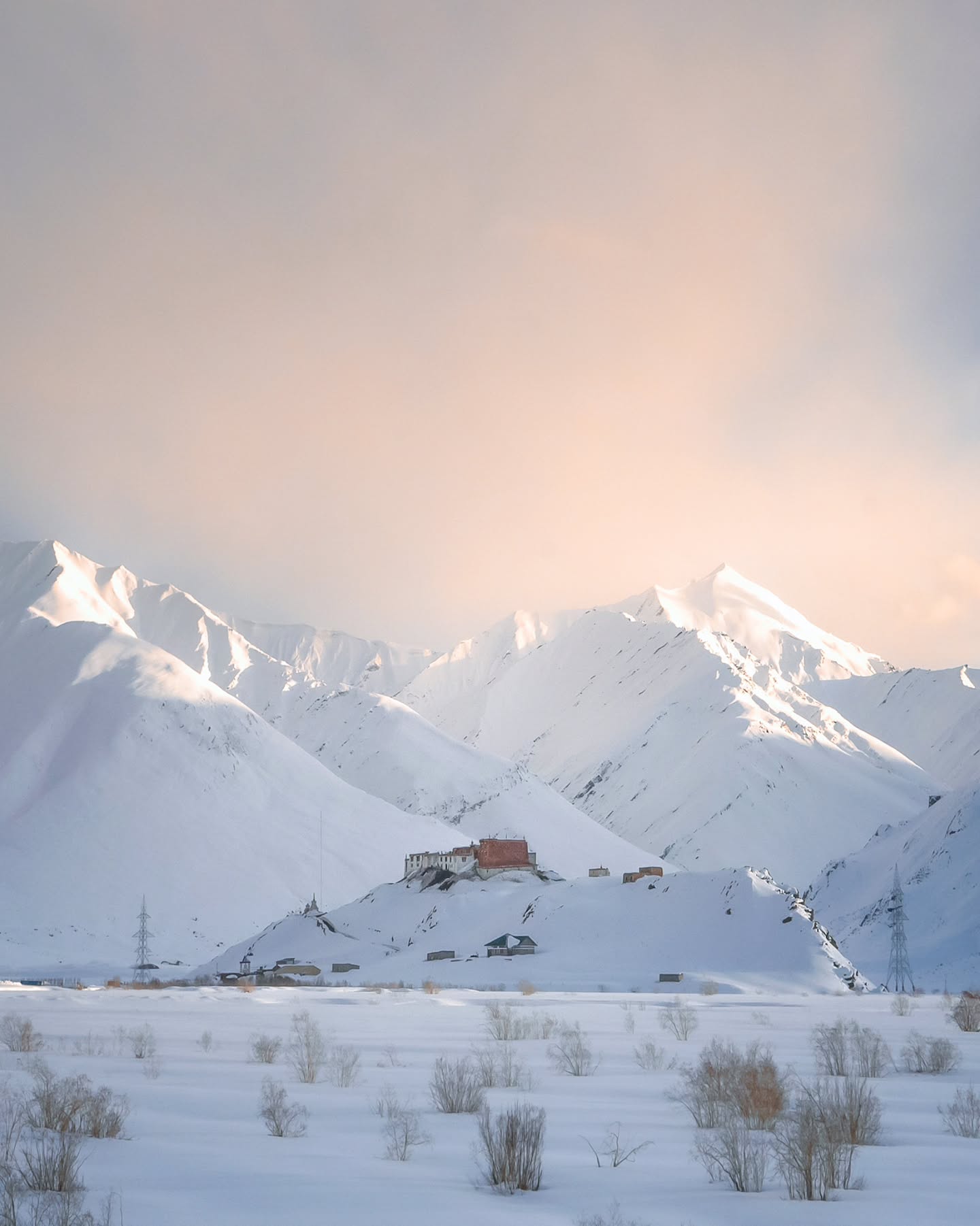
🧭 Why Rangdum Is More Than Just a Monastery
To call Rangdum Monastery merely a place of worship would be a profound understatement. In a land where roads are few, distances vast, and winters brutal, this isolated gompa represents far more than bricks, prayer flags, and ancient rituals. Rangdum is a cultural threshold, a spiritual gate, and a bridge between not just valleys, but entire ways of life.Lying on the border of Suru and Zanskar, Rangdum is where two distinct worlds quietly intersect. To the north, the Suru Valley is predominantly Shia Muslim, known for its stone hamlets, apricot orchards, and Islamic heritage. To the south, Zanskar unfolds with its timeless Tibetan Buddhist traditions, high-altitude villages, and carved prayer stones. Rangdum doesn’t belong entirely to either—it stands between them, and because of that, it becomes both.
This unique positioning gives the monastery a rare identity as a cultural mediator. It symbolizes peaceful coexistence in a region that could have easily drawn dividing lines. Here, locals from both faiths visit the same highland pastures, trade goods, and share mountain passes with mutual understanding. The monks of Rangdum often engage with villagers from both valleys, offering blessings and support regardless of religion. There is no loud proclamation of unity here—it is lived quietly, day after day.
Rangdum is also a place of personal transformation. For many travelers, the long and meditative journey to reach it strips away distractions. It reveals the smallness of the self against the vastness of the Himalayas. Visitors often speak of the clarity they feel—whether it’s while listening to the chant of a single monk echoing across the courtyard, or while standing outside at night, looking up at a sky so full of stars it feels like a cathedral made of light.
The simplicity of Rangdum’s life is its greatest teacher. There are no grand entrances, no elaborate murals, no tourist shops. Just silence, presence, and the slow unfolding of ritual. In that slowness lies the power of Rangdum: it reminds us to be still, to pay attention, to let the landscape and spirit enter us fully.
For photographers and writers, it is a muse. For seekers and pilgrims, it is a sanctuary. And for the local communities of Suru and Zanskar, it is a shared guardian of tradition and time. Rangdum may not be as famous as Hemis or Thiksey, but that is its strength—it remains untouched by the crowds, and unburdened by the need to perform.
Ultimately, Rangdum is not a destination in the way a city or viewpoint might be. It is a threshold—between cultures, between histories, and for many, between who they were when they arrived, and who they become when they leave.
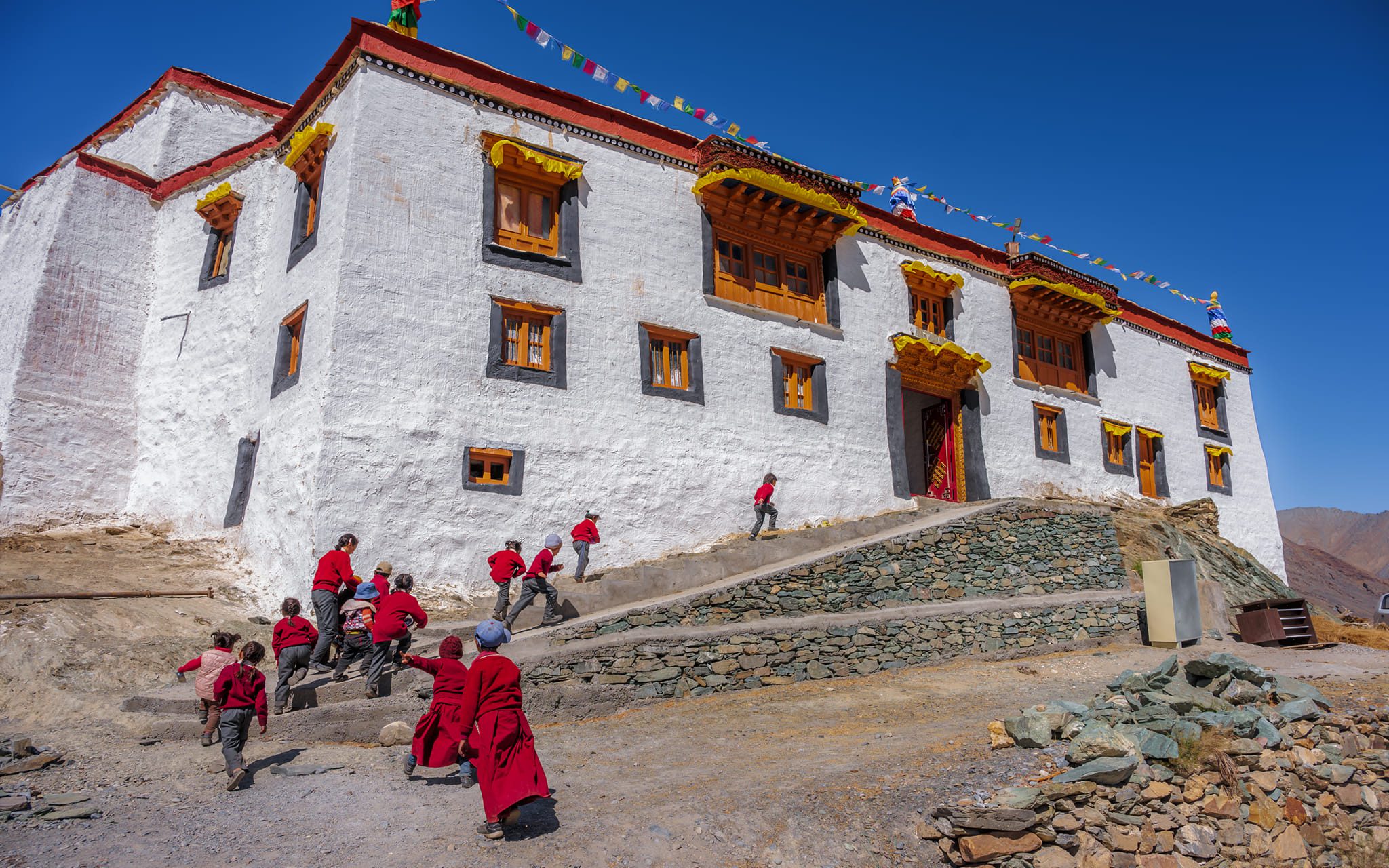
✨ Final Thoughts: Rangdum’s Role in the Ladakhi Landscape
In a land defined by extremes—blazing sun and icy wind, barren mountains and sacred sanctuaries—Rangdum Monastery stands as a quiet yet powerful reminder of Ladakh’s layered soul. It is not just a landmark pinned to a map, but a living part of the cultural and spiritual fabric that binds the Himalayas together.While Ladakh’s better-known monasteries attract thousands of tourists, Rangdum continues to sit in silence, far from the spotlight. And that’s exactly why it matters. It is a keeper of authenticity, of stories still told in whispers, of rituals still practiced for the sake of devotion rather than display.
As Ladakh evolves—with roads improving, tourism growing, and global curiosity mounting—places like Rangdum become even more vital. They offer us an unfiltered glimpse into the resilience of tradition, the simplicity of sacred living, and the beauty of unadorned truth. In Rangdum, the pace of life remains tied not to the ticking of a clock, but to the slow turning of a prayer wheel, the shifting clouds over the peaks, and the seasonal thaw of ancient glaciers.
For travelers, Rangdum is a gift—a place that asks nothing but presence, and gives everything in return. It rewards the patient, the humble, the curious. You don’t come here to be entertained. You come here to understand. To reflect. To walk slowly among prayer stones and sky.
But Rangdum is also a mirror. It reflects back who we are when everything else is stripped away: no cell signal, no polished itinerary, no distractions. Just you, the mountains, and the quiet murmur of a monastery built not for crowds, but for contemplation.
In the end, Rangdum is a bridge—not just between Suru and Zanskar, but between eras, beliefs, and people. And if you cross it with open eyes and a willing heart, you may just find that the most profound journey is not measured in kilometers, but in stillness, and in the stories you carry home.

